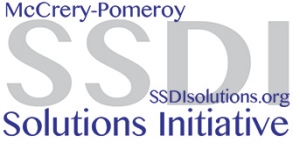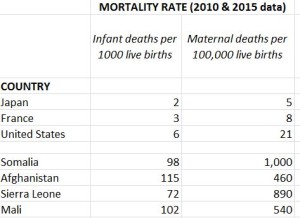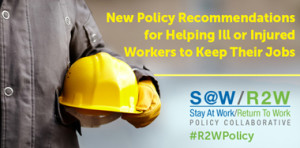I recently asked Val Lougheed some questions about her book Be Still and her experience recovering from major trauma. I have summarized our dialogue for you below.
At the time of the head-on automobile collision that nearly cost her life in 2003, Val was the owner and president of a successful rehabilitation company then called Northern Lights Canada, with a large staff in Ontario. The accident caused a significant head injury, internal injuries, and multiple broken bones. She made a remarkable recovery and was left with subtle limitations. If you want to see Val in action, here’s a brief 4 minute YouTube video of her speaking at a conference. She was able to return to her company, and then found a new calling as a speaker and author on head injury and recovery. Her book Be Still is a very personal set of vignettes from her hospitalization, her recovery and rehabilitation — and her reinvention of herself.
Val and I met in person a few years ago. She has been a longtime valued contributor to the multi-disciplinary Work Fitness & Disability Roundtable email discussion group I run. I recently read Be Still and recommend it to you. Her book offers a very personal glimpse into the inner experience and outer realities of someone bound and determined to heal from devastating injuries. She has been working on a second book to be released later this year.
DR J: Why and when did you decide to write your book, Be Still?
VAL: It was serendipity. At the time of my accident, I had almost finished a Master’s Degree in Community Rehabilitation and Disability Studies at the University of Calgary. My advisor knew I had kept a journal while I was in the hospitals, and suggested that I write a narrative about my recovery for my thesis. She encouraged me to write only about my personal experience – no research, no literature references, no nothing. She said to write it so that when someone read it they would feel like they were going through the experience with me. As I analyzed my journals, the particular themes that stood out were trauma, pain, depression, acquired brain injury, narcotic pain killers, and methods of helping. Writing that paper was sort of like an exercise in do-it-yourself narrative therapy. I believe it augmented my recovery. And then I realized I could self-publish it as a book.
DR J: What did you want your book to accomplish?
VAL: I wrote it in hopes that it would provide some useful insights into the following questions:
1. What does it mean to recover?
2. What can I do, myself, to recover and return to a life that includes work?
3. What can we do — as practitioners, as family, as friends — to aid recovery and return to work?
I have realized that the meaning of my accident for me comes from writing, studying and speaking about recovery. So every time I speak, I feel like I owe my life to the people who are listening. Every time someone reads my book, it’s the same – I owe my life to them. To my complete delight, people respond to my talks with the same amount of passion (and tears) that I have in giving them. I am driven by the hope that my work can, in some small way, lead to the development of a more sensitive, effective and in-tune system within which practitioners and patients/clients can work together to achieve successful returns to life and work.
DR J: You have some very personal experiences to share with us — but before we go there, do you have any advice for people now trying to recover in the “system”?
VAL: Of course! Here are my six best suggestions.
- Play your own game. Don’t fall into the trap of believing you are disabled and can’t work, or that you don’t want to work/be functional.
- Be curious about your recovery. Try to learn and understand everything about all aspects of your recovery. Read, talk to people, write a journal – whatever you like to do. This helps to put the ‘problems’ outside of you so you can look at them with some distance between you and them. This helps to preserve your inner self from being consumed by your problems.
- Functionality is everything. Be clear about what a functional life for you looks like, and work towards that. Don’t get sidetracked with standardized measurements and pronouncements, or with the need to prove that you are disabled. For sure, do whatever you have to do to get the money and help you need to recover — and play the game if necessary. But always continue working towards your own vision of personal functionality.
- Get good psychological help. If you can afford it, or convince the insurer to pay for it, find a good psychologist or counsellor who can support you in your efforts to recover. My preference is narrative therapy, for a couple of reasons. First of all, it helps you to separate yourself from your impairments/illnesses/problems and work on them from a distance, so that you don’t drown in them. Secondly, it helps you to re-story yourself and your life, which is so important when you are going through a ‘re-organization of self’.
- Look for ‘angels’. There are some people out there who are truly angels. They are the ones who are prepared to listen to you, respect you, understand you and even love you. If you find one, spend time with them, listen to them, and let them help you.
- Stand up for what you know you need. You will be called all sorts of names (malingerer, non-compliant, unmotivated, etc, etc). Do not listen to this. Be clear about what you need and then search out people who can help you in this regard.
- Never, ever, ever give up!
DR J: What have you learned about how recovery really happens?
VAL: I know now how recovery happens on different levels. There is the outside recovery – the physical aspect of it. That part can be measured, quantified and standardized (e.g., how long does it take a broken collar bone to heal and what will it look like?). Healthcare professionals assess and fix this kind of stuff.
But then there is the inside recovery, which I found to be a deeply personal experience. In reality, there is no difference between the physiological and the psychological – no split between the mind and the body. The combined whole person can’t be standardized, measured, quantified or partitioned (which is very frustrating for a disability benefits system based on those things).
Shortly after I woke up after the accident I realized that I had lost myself. By ‘myself’ I mean my spirit, my soul, my energy – whatever it was inside of me that was ‘me’ was gone. I realized that I was becoming someone else, but I had no control over the process. Very scary – like all of a sudden not knowing who or where you are….like floating with no ground under you and no net to catch you. In clinical terms, I would call it an ‘existential crisis’.
In Judith Herman’s excellent book, Trauma and Recovery, she contends traumatic life events can shatter the sense of self. Since an event is traumatic if the involved person perceives it to be traumatic, there must a lot of people out there with shattered selves! And typically, it’s not exclusively the doctors and other healthcare professionals who help put the inner person back together – it might be social workers, friends, family, a minister, a nun, or maybe even just a comment from a person in passing.
Beyond this, a good recovery requires an alignment of the stars so to speak, in terms of the presence of positive family and social support along with other facilitating factors (a safe place to live, relatively good general physical and mental health, enough money to manage, and so on) to realize progress.
DR J: How did the knitting back together of Val, the whole person occur?
VAL: Here’s one little story: About four months after the accident, I was talking to Sister Brenda, a nun at St. John’s Rehab Hospital in Toronto where I was a patient. I shared with her my sense of loss of self. By virtue of her amazing listening and empathy skills, I suddenly found myself. My “me” was all rolled up in a little ball in my stomach! I thought back to the accident, and suddenly it made sense to me why that was where it was. As the other car approached, I must have realized that I was not going to be able to escape a collision — so the me that is ‘me’ hid away. As soon as I found where “me” was, I knew that was the start of true recovery. I believe this experience of a ‘split’ between the mind and the body is the result of trauma.
Coming back to life required major internal change, a re-organization of myself on a grand scale. It required me to have a strong sense of personal control, personal power, and raw courage to follow through with necessary (and often painful) treatments and rehabilitation activities.I needed to be around people an practitioners who could help me with these things. In his amazing book, The Upside of Down Thomas Homer-Dixon describes the process of ‘”coming back” as a “novel and unpredictable recombination of elements”. That is exactly what it felt like for me.
Jon Kabat-Zinn has my favourite definition of what rehabilitation is really all about. He says that “rehabilitation is the learning to live inside not only one’s body, however it is after an injury or illness, but inside one’s very being”. That quote really resonates with me.
DR J: Who and what helped or hindered your rehabilitation?
VAL: When I think of who helped me most to come back to life, there was of course a literal village of wonderful doctors, nurses, physios, OT’s, psychologists, etc. etc. who helped put my body and my head back together. But specific people and particular moments — both bad and good — stand out in my mind.
I felt very vulnerable all the time during my recovery – physically obviously, but also emotionally. I felt that anyone could hurt me so easily that it was very hard to trust anybody. This issue of trust is a huge one, in my opinion, in terms of facilitating recovery. If I trusted someone, I loved them and would try my hardest to do whatever they asked. If I did not trust someone, I hated them because I felt like my life was being threatened by them, and I would do whatever I could to get away from them. This led me to define what trust meant for me…..
I trust (love, feel safe with, will try hard for) people who:
• Listen to me
• Understand me
• Respect me
• Are competent.
In terms of being a client in the disability benefits system, when trust, positive regard, respect, and so on were absent, I could sense it – like an animal instinct. If someone treated me like this, I would feel threatened, and become REALLY uncooperative (I couldn’t help myself!), and do everything in my power to get away from that person. This is a good example of what’s called avoidance behaviour in the world of neuroscience (Rock, 2008). I think it is often mis-labeled as non-compliant, malingering, unmotivated, etc. etc. in the system.
When my personal experience of impairment was not taken into consideration, when my recovery was measured against published norms that did not reflect exactly where I was in time and space, when I was not trusted, when I was not understood or respected, I not only lost my physical and cognitive ability to function, I also lost my will to recover.
But on the other hand – I definitely needed the money that I got from the insurance company to support me and to pay for necessary therapies when I could not work. And of course, in order to secure such monies, I had to continually prove that I was still disabled, with on-going health care assessments.
But frankly, it’s hard to recover when you are having to prove you are disabled in order to get help. It casts you in a crazy world of damned if you are recovering (because then you lose your benefits) and damned if you aren’t (because then you lose your functional life). The contentious, confrontational and distrustful atmosphere within which this plays out only serves to make it all so very much worse. This is the reality of the disability paradox that plagues the current system adn that is what I’m researching and writing about now.
DR J: Thank you, Val Lougheed, for sharing your personal experience of a difficult but successful recovery with us.
VAL: Thank you for the opportunity.
Like this:
Like Loading...


